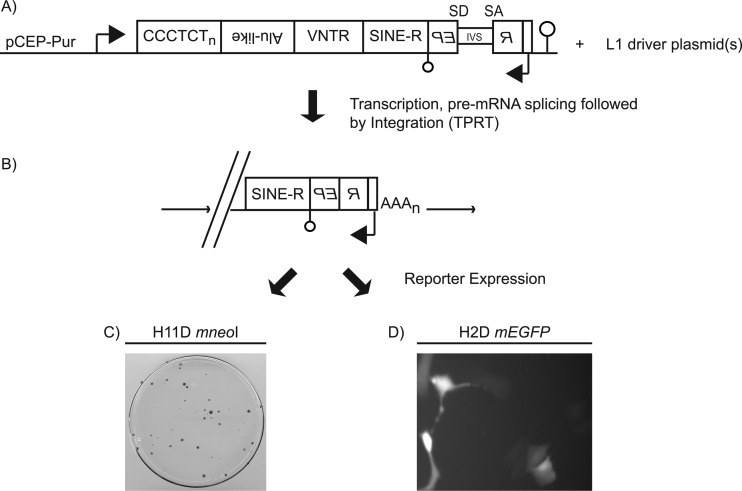Fig 2.
Rationale of SVA trans-mobilization assay. (A) An SVA marked with a retrotransposition indicator cassette is shown. Engineered SVAs are cloned into pCEP-Pur, which contains a CMV promoter (bent arrow, top strand) and an SV40 polyadenylation signal (lollipop, top strand). The retrotransposition indicator cassette contains a reporter gene (REP) cloned in opposite orientation relative to the transcriptional orientation of the SVA. The reporter gene contains a promoter (bent arrow, bottom strand) and a poly(A) signal (lollipop, bottom strand); however, due to an intron (IVS) in the same orientation as the SVA the reporter is nonfunctional. Only after a round of transcription with removal of the intron by pre-mRNA splicing and then integration presumably by target-primed reverse transcription (TPRT) (13, 55, 65) will the reporter gene be activated. (B) Cotransfection of an engineered SVA—the passenger—with a plasmid(s) containing active L1 sequence cloned into pcDNA6 will result in an SVA retrotransposition event. New SVA insertions will be of various lengths (diagonal lines) due to occasional 5′ truncations, will be flanked by a target site duplication (black horizontal arrows), lack the intron, and will end in a poly(A) tail. The activated reporter (mneoI (26, 61) or EGFP retrotransposition indicator cassette (66) via retrotransposition will result in Neor foci (C) or EGFP-positive cells (D). SD, splice donor; SA, splice acceptor.

